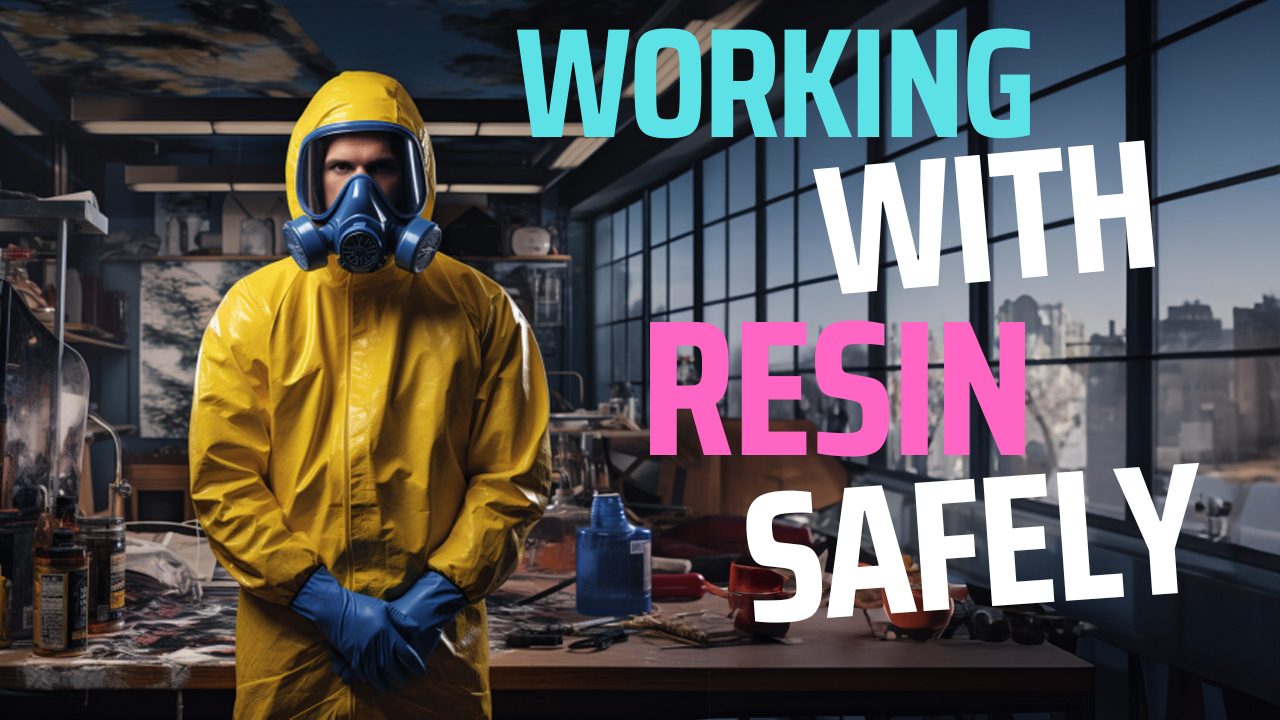Creating artwork with resin is an exciting and versatile medium that allows artists to bring their visions to life. However, it is crucial to prioritize safety when working with resin due to the potential hazards it presents. In this resin art safety guide, we will explore the dangers associated with resin and provide safety precautions to ensure a secure and enjoyable artistic experience.
Unfortunately, some individuals may experience sensitivity or allergic reactions when exposed to epoxy resin. This can be attributed to the chemicals present in the resin, such as bisphenol A (BPA) and epoxy resin hardeners.
Understanding the Dangers
Resin, in its liquid form, contains harmful chemicals that can pose health risks if not handled properly. The two primary components of resin, the resin itself and the hardener can emit volatile organic compounds (VOCs) and release toxic fumes during the curing process. These fumes can irritate the respiratory system, eyes, and skin, leading to short-term discomfort and potential long-term health issues. In more severe instances, individuals may also experience respiratory symptoms like coughing, wheezing, or shortness of breath when inhaling epoxy resin fumes.
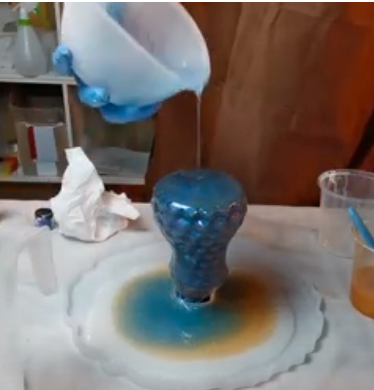
Plan ahead
Always treat chemicals with caution, plan ahead for what to do in case of an accident, and keep your phone charged and easily accessible in case you need to call emergency services quickly. If any symptoms occur, it is advisable to seek medical attention and avoid further exposure to epoxy
Safety Precautions for Resin Art Safety
Ventilation is Key
Ensure you work in a well-ventilated area, preferably with open windows or a ventilation system. Adequate airflow helps dissipate the fumes and prevents their accumulation, reducing the risk of inhalation. Consider using fans or air purifiers to further enhance air circulation. My workshop or Art Lab as I call it, is in my garage so I have the garage door up and also have a fan on to create airflow and push any fumes from the back of the room to the open garage door.
Personal Protective Equipment (PPE)
Wear appropriate PPE to shield yourself from potential hazards. This includes:
Respiratory Protection:
Use a respirator with organic vapor cartridges to filter out harmful fumes. N95 masks are not sufficient for this purpose. Your respirator mask should be stored in a sealed bag whenever it is not in use. If left out in the open the carbon filters will absorb volatiles out of the air and will reduce its lifespan.
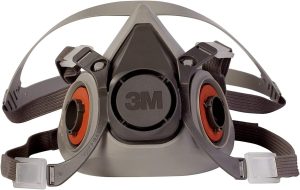
The filter should also be replaced as per the expiry date of the filter stamped by the manufacturer. Once the filter is opened, it should be changed within 6 months or by the expiry date, whichever is soonest, even if it is not used.
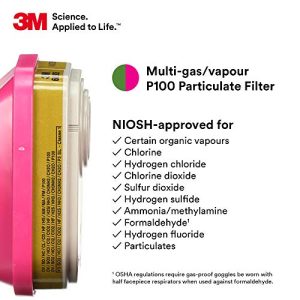
Eye Protection:
Wear safety goggles or a face shield to protect your eyes from splashes or accidental contact with resin. There are so many opportunities when mixing resin to accidentally have some splash up and hit you in the eye if unprotected.
If this were to ever happen immediately wash your eye thoroughly with water to get out any resin and call emergency services.
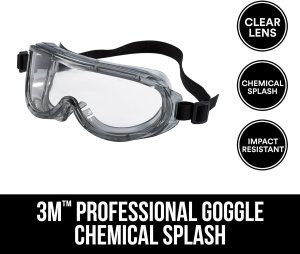
Skin Protection:
Cover your skin by wearing long sleeves, pants, and gloves made of nitrile or other chemical-resistant materials. Avoid latex gloves, as resin can degrade them.
Old business shirts from the second-hand thrift store make great art shirts! Especially those vintage ones from the ’70s.

| Recommended Personal Protection Equipment |
| 3M Halfmask – Medium 3M Fullmask – Medium 3M Fullmask – Large Organic Vapour filters for masks Nitrile GlovesSilicon Mat 3M Eye Protection googles |
Resin Art Work Area Preparation
Take the following precautions to create a safe working environment:
Cover your workspace with a disposable plastic or silicone mat to protect surfaces from resin spills and stains. I have a double layer of plastic (Plastic table cloth) and I have a resin mat that I have on top of the resin that I do my resin work across.
Keep your work area clean and organized, minimizing the risk of accidents or contamination.
Proper Handling and Mixing
Follow these guidelines when handling and mixing resin:
- Read and understand the manufacturer’s instructions thoroughly before use.
- Wear PPE throughout the entire process, from measuring to pouring and mixing.
- Use designated measuring tools to ensure accurate resin-to-hardener ratios, as improper ratios can affect the resin’s curing process and potentially compromise its integrity and cause an unknown ratio of fumes.
- Mix resin and hardener gently but thoroughly, avoiding excessive stirring that could introduce air bubbles.
Curing and Post-Curing Safety
After pouring and shaping your artwork, consider the following precautions during the curing and post-curing stages:
Allow your artwork to cure in a well-ventilated area, away from living spaces, to minimize exposure to fumes.
Follow the recommended curing time provided by the manufacturer. Rushing the process may result in incomplete curing or compromised structural integrity. Fumes are still expelled right through the curing process.
Once cured, handle your artwork with care, as it may still emit residual fumes. Consider storing it in a well-ventilated area until the fumes dissipate completely.
Resin Art Finishing Safety
Although your Resin artwork, casting or jewelry is cured there can still be harmful elements when you sand or polish to get to the final result.
If you are sanding then you should be wearing the respirator, goggles, and gloves at a minimum.
If you are polishing your artwork after it has gone through the sanding process then you are introducing a number of new chemicals with the introduction of a polishing compound. When polishing it is also advised to wear your respirator, goggles, and gloves.
Final Thoughts
When we talk about all the possible bad things that resin can bring it’s enough to scare you off making resin art, especially if you have a low-risk tolerance. However, making things with resin can be a fun and enjoyable experience that produces works that other mediums are not able to compare.
By understanding the potential dangers and implementing the necessary precautions, artists can create their masterpieces while minimizing health risks. Remember, proper ventilation, PPE, workspace preparation, and careful handling are key to ensuring a safe and enjoyable resin art journey.
Have fun, but stay safe!
Andy @ The Art Lab



